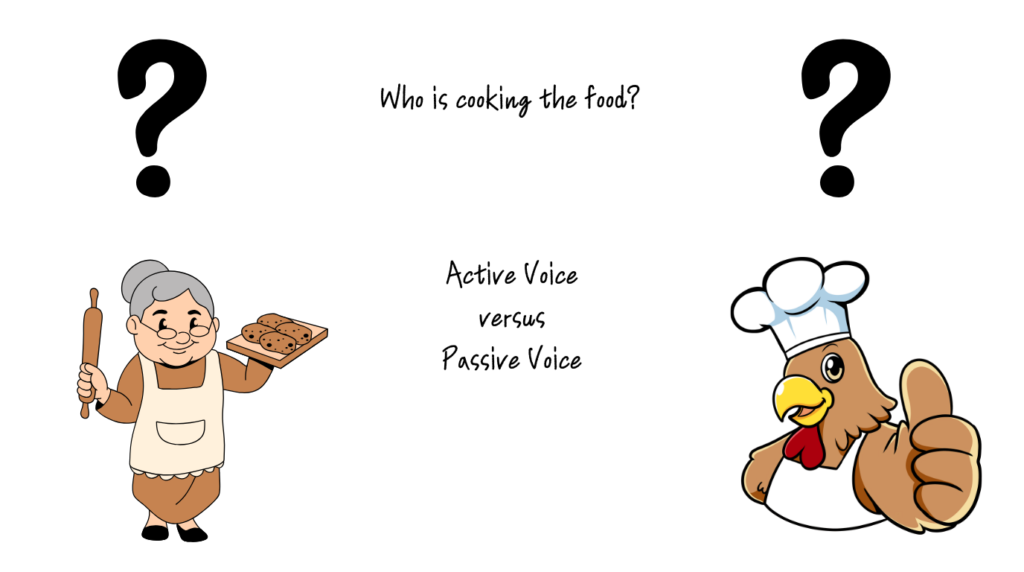
Ah, grammar. The noble art of making sure no one misunderstands whether Grandma was cooking the chicken or if the chicken was, in fact, cooking Grandma. Today, dear reader, we’re tackling one of the fiercest linguistic rivalries of all time: Active Voice vs. Passive Voice. It’s like Batman vs. Superman, but with verbs and a whole lot less CGI.
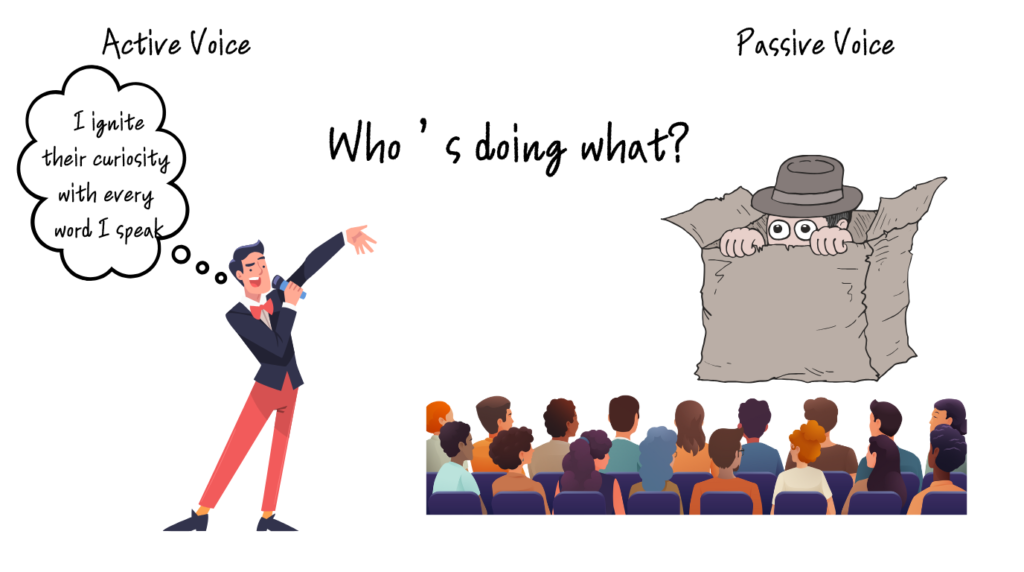
Before we dive into this grammatical WrestleMania, let me make one thing clear: if you walked in here thinking ‘voice’ was just something you use to yell at your microwave when it refuses to heat your Hot Pocket evenly, I applaud your optimism. But no, in grammar, ‘voice’ has nothing to do with vocal cords or public speaking. Instead, it has everything to do with who’s doing what and whether they’re proudly stepping up to the mic (active voice) or awkwardly hiding in the shadows like a shy intern at an office karaoke night (passive voice).
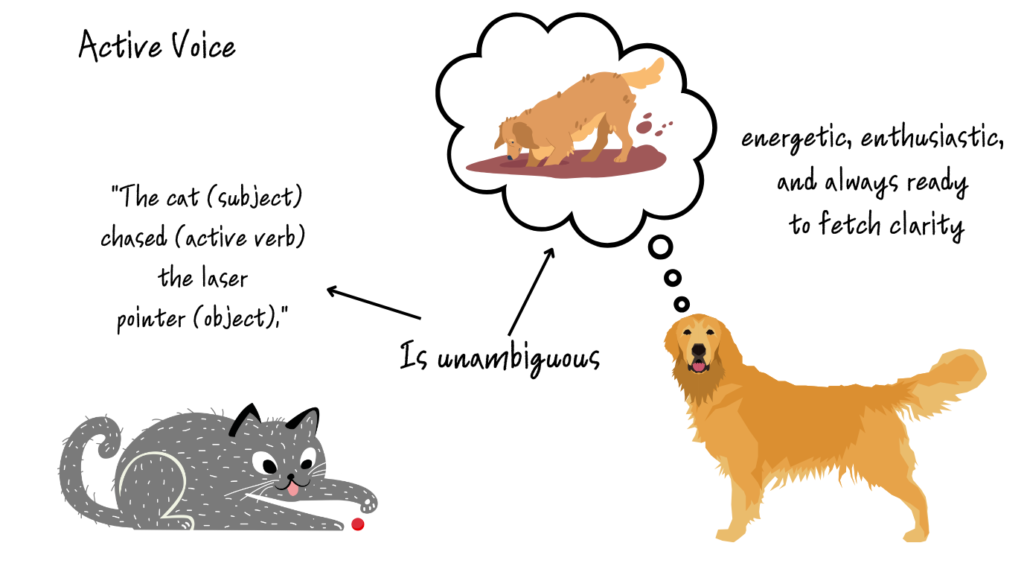
The Active Voice—The Overachiever of Grammar
Active voice is the golden retriever of sentence construction: energetic, enthusiastic, and always ready to fetch clarity. In an active sentence, the subject does the action. It’s that simple. Take this gem: “The cat (subject) chased (verb) the laser pointer (object).” Boom. No room for ambiguity. We know the cat is on the prowl, the laser pointer is the victim, and everyone can move on with their day.
Active voice is like that friend who always volunteers to drive during road trips. Reliable, dependable, and most importantly, in control. You know who’s doing what, and there’s no way to misinterpret the situation.
But of course, active voice can also come off as a little… pushy. Sometimes, it feels like a used car salesman, always putting the subject front and center. “The dog ate my homework!” Okay, calm down, buddy. We get it. The dog did the thing. Active voice wants you to know EXACTLY who’s guilty.
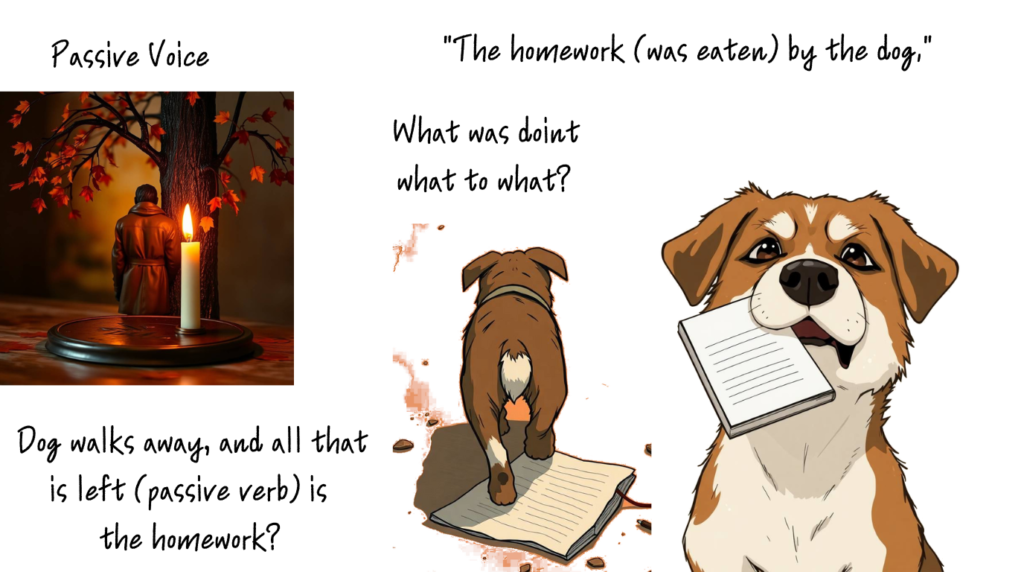
The Passive Voice—The Awkward Cousin at the Family Reunion
Now we swing to the other side of the grammatical playground: passive voice. If active voice is the confident hero, passive voice is the mysterious stranger in a trench coat. In passive constructions, the subject takes a backseat while the action and the object steal the spotlight.
Consider: “The homework was eaten by the dog.” Oh, look at that. The dog is skulking away, and now the homework is front and center like it’s starring in an indie film about existential dread.
Passive voice is the verbal equivalent of saying, “Mistakes were made,” instead of “I messed up.” It’s evasive. It’s noncommittal. And sometimes… it’s kind of shady.
But here’s the kicker: passive voice isn’t always the villain. Sometimes, it’s downright classy. Like, “A groundbreaking discovery was made by scientists.” Now THAT sounds like a headline worth clicking on. Passive voice has a way of adding gravitas and making sentences feel important, like Morgan Freeman is about to narrate them.
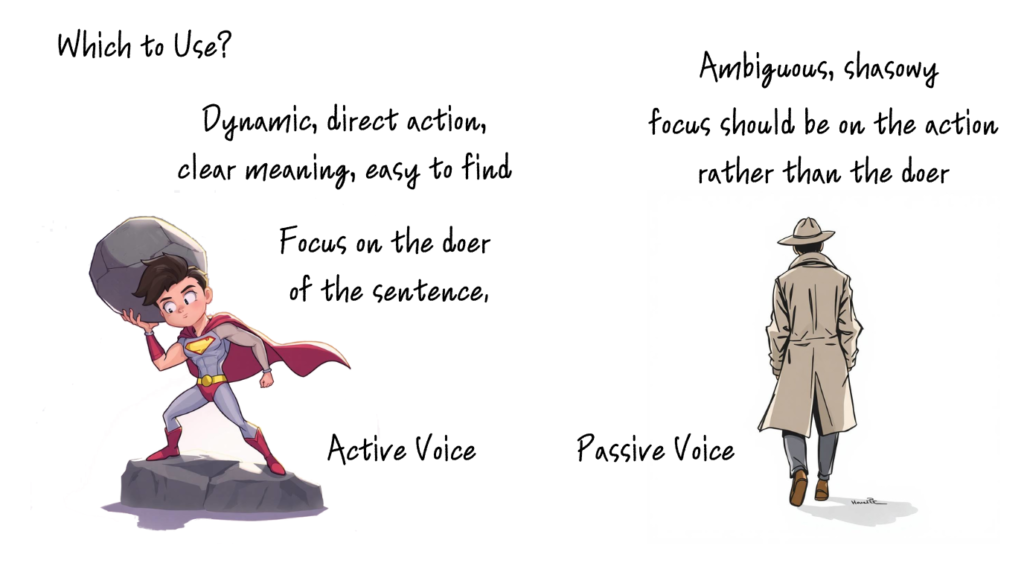
When to Use Which–The Cage Match
Okay, so we’ve got our two contenders: Active Voice, the confident go-getter, and Passive Voice, the shadowy diplomat. But when do you use which?
Active voice is your go-to for clarity, brevity, and making a point. Writing a resume? Active voice. Writing an angry Yelp review about cold fries? Active voice. Delivering bad news quickly? “Janet spilled coffee on the CEO’s laptop.”
On the other hand, passive voice shines when the focus should be on the action rather than the doer. Scientific papers love passive voice because it removes personal bias. “The experiment was conducted.” Who conducted it? Probably some poor grad student, but we don’t need to point fingers. Passive voice also comes in handy when you don’t know who did something. “The cake was stolen.” (Probably by your roommate, but we lack hard evidence.)
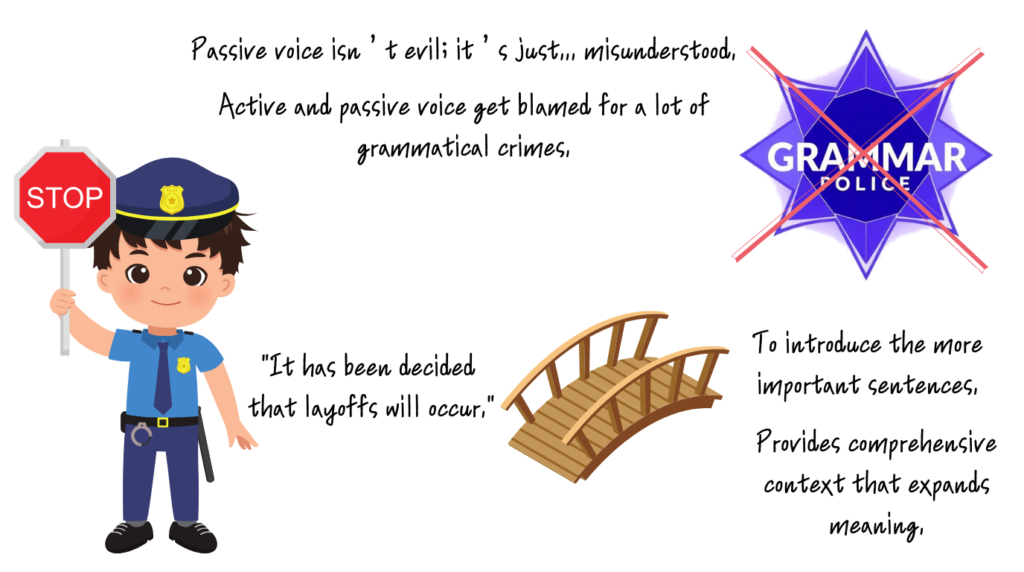
The Ugly Misunderstandings
But let’s be real—active and passive voice get blamed for a lot of grammatical crimes they didn’t commit. People love to shout, “Never use passive voice! It’s weak! It’s confusing!” Calm down, Kevin. Passive voice isn’t evil; it’s just… misunderstood.
Passive voice isn’t inherently bad. Misusing it is. Like when corporate emails say, “It has been decided that layoffs will occur.” Uh, excuse me? By whom? The Grammar Gods? Passive voice is often used to dodge responsibility, and THAT’S when it earns its bad reputation.
The sentence above, “It has been decided that layoffs will occur,” can be an effective sentence in that it can be used as a bridge between more active sentences to enhance meaning. For instance, it can effectively enhance a paragraph by providing a clear, definitive statement about an impending decision, conveying urgency and gravity. It sets a serious tone, prompting readers to understand the implications of the layoffs, such as impacts on employees and the organization’s financial health. By including this sentence, the writer can build upon it to discuss reasons for the layoffs, the criteria used for selection, potential employee support measures, or the overall strategy for navigating the challenges ahead, thus providing a comprehensive context that deepens the reader’s understanding of the situation.
On the flip side, overly aggressive active voice can be exhausting: “The intern delivered the presentation. The manager approved the report. The janitor polished the floors.” Okay, Hemingway, we get it.

The Grand Conclusion
So, what have we learned today, class? Active voice is bold, direct, and puts the subject in the driver’s seat. Passive voice, meanwhile, is subtle, sometimes shifty, but undeniably smooth when used correctly.
At the end of the day, it’s all about balance. Like a good taco. Too much hot sauce (active voice), and it’s overwhelming. Too much sour cream (passive voice), and it’s bland. The key is knowing your audience, your purpose, and whether you want to sound like you’re confessing to a crime or not (“Mistakes were made”) or confidently owning your actions (“I screwed up”). So go forth, my grammatically enlightened friend! Write boldly, speak wisely, and for the love of all things holy, don’t let your sentences sound like they were drafted by a malfunctioning robot. The power is yours. Or rather… the power has been given to you. (See what I did there?)